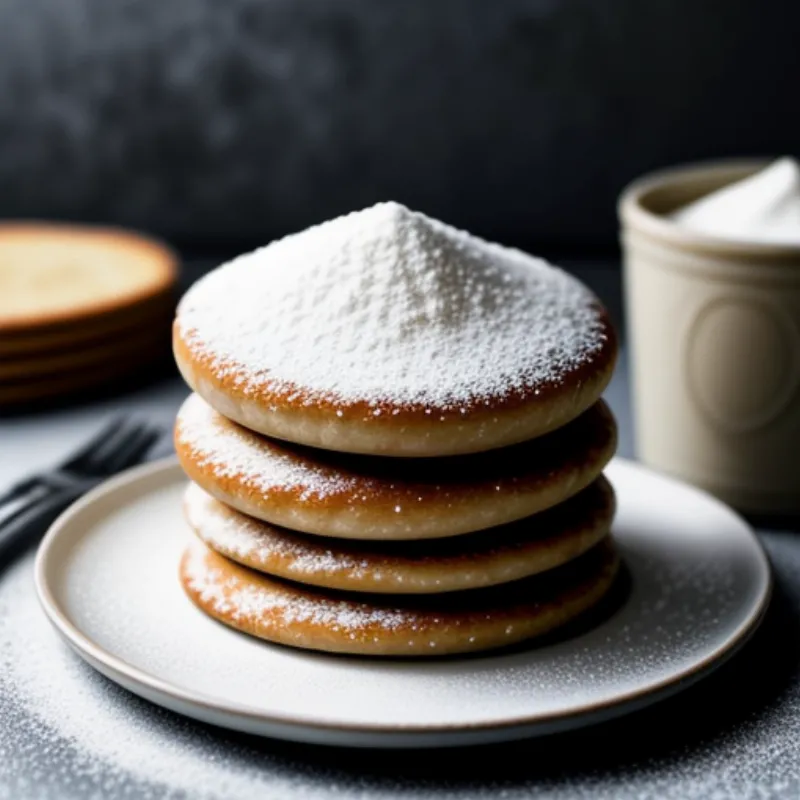Faworki, also known as angel wings, are a traditional Polish pastry that’s especially popular during Carnival season. These delicate, crispy treats are made from a simple dough that’s rolled thin, cut into intricate shapes, and deep-fried until golden brown. With their light and airy texture and irresistible sweetness, faworki are sure to delight both children and adults alike.
While the process of making faworki from scratch might seem intimidating at first, this step-by-step guide will show you that it’s actually quite straightforward. So gather your ingredients, put on your apron, and let’s embark on a culinary journey to create these delightful Polish treats in your own kitchen!
Ingredients You’ll Need
- 2 cups all-purpose flour, plus extra for dusting
- 4 large egg yolks
- 1/4 cup sour cream
- 1 tablespoon granulated sugar
- 1 tablespoon vodka or rum (optional, but adds to crispness)
- 1/4 teaspoon salt
- Vegetable oil, for frying
- Powdered sugar, for dusting
Tools You’ll Need
- Large mixing bowl
- Rolling pin
- Sharp knife or pastry cutter
- Slotted spoon or spider strainer
- Paper towels
- Cooling rack
Step-by-Step Instructions
1. Make the Dough
- In a large mixing bowl, whisk together the egg yolks, sour cream, sugar, vodka (if using), and salt until well combined.
- Gradually add the flour to the wet ingredients, mixing with a wooden spoon or spatula until a dough starts to form.
- Turn the dough out onto a lightly floured surface and knead for 5-7 minutes, or until smooth and elastic. Add a little extra flour if the dough feels too sticky.
2. Roll Out the Dough
- Divide the dough into two or three smaller portions. This will make it easier to roll out.
- Working with one portion at a time, use a rolling pin to roll out the dough on a lightly floured surface until it’s very thin, almost translucent. You want the dough to be about 1/16-inch thick.
3. Cut the Faworki
- Once the dough is rolled out, use a sharp knife or a pastry cutter to cut it into rectangular shapes, about 3 inches long and 1.5 inches wide.
- Make a 1-inch slit in the center of each rectangle.
- Gently pull one end of the rectangle through the slit to create the characteristic “bow tie” shape of faworki.
 Faworki Dough
Faworki Dough
4. Fry the Faworki
- In a large, deep pot or Dutch oven, heat about 2 inches of vegetable oil over medium-high heat to 350°F (175°C). To test if the oil is hot enough, drop a small piece of dough into the oil—it should sizzle and float to the top immediately.
- Carefully add a few faworki to the hot oil at a time, making sure not to overcrowd the pot.
- Fry the faworki for 1-2 minutes per side, or until they are golden brown and crispy.
- Use a slotted spoon or spider strainer to remove the fried faworki from the oil and transfer them to a plate lined with paper towels to drain excess oil.
5. Dust with Powdered Sugar
- Once the faworki have cooled slightly, generously dust them with powdered sugar while they’re still warm.
 Freshly Made Faworki
Freshly Made Faworki
Tips and Tricks for the Best Faworki
- Adding alcohol to the dough: While optional, adding a tablespoon of vodka or rum to the dough helps to inhibit gluten formation, resulting in a more tender and crispier faworki.
- Rolling the dough thin: The thinner you roll the dough, the crispier your faworki will be. Don’t be afraid to roll it out as thin as possible.
- Maintaining the oil temperature: It’s important to keep the oil temperature consistent throughout the frying process. If the oil is not hot enough, the faworki will absorb too much oil and become greasy. If the oil is too hot, they will burn before cooking through.
- Don’t overcrowd the pot: Frying the faworki in batches will ensure that they cook evenly and prevent the oil temperature from dropping too low.
Serving and Enjoying Your Faworki
Faworki are best enjoyed immediately after frying while they’re still warm and crispy. They make a delightful treat on their own or can be served with a dollop of whipped cream, a sprinkle of cinnamon sugar, or a side of fruit compote.
FAQs about Making Faworki
Q: Can I make faworki ahead of time?
A: While faworki are best enjoyed fresh, you can make them a few hours in advance. Once they have cooled completely, store them in an airtight container at room temperature. To recrisp them before serving, simply pop them into a preheated 300°F (150°C) oven for a few minutes.
Q: My faworki turned out a bit chewy. What went wrong?
A: Chewy faworki are usually a result of the dough not being rolled out thinly enough or the oil temperature being too low. Make sure to roll your dough as thinly as possible and maintain the oil temperature at 350°F (175°C) while frying.
Q: Can I freeze faworki?
A: Yes, you can freeze uncooked faworki for up to 3 months. Arrange them in a single layer on a baking sheet lined with parchment paper and freeze until solid. Once frozen, transfer them to a freezer-safe bag or container. To fry from frozen, simply add the faworki directly to the hot oil, adding a few minutes to the cooking time.
Making faworki is a fun and rewarding culinary adventure that allows you to experience a taste of Polish tradition. So gather your ingredients, follow these simple steps, and enjoy the crispy, sweet goodness of homemade faworki!
 Sharing Faworki
Sharing Faworki
We encourage you to try this recipe and share your experience in the comments below! We’d love to hear your feedback and see pictures of your beautiful, homemade faworki.
